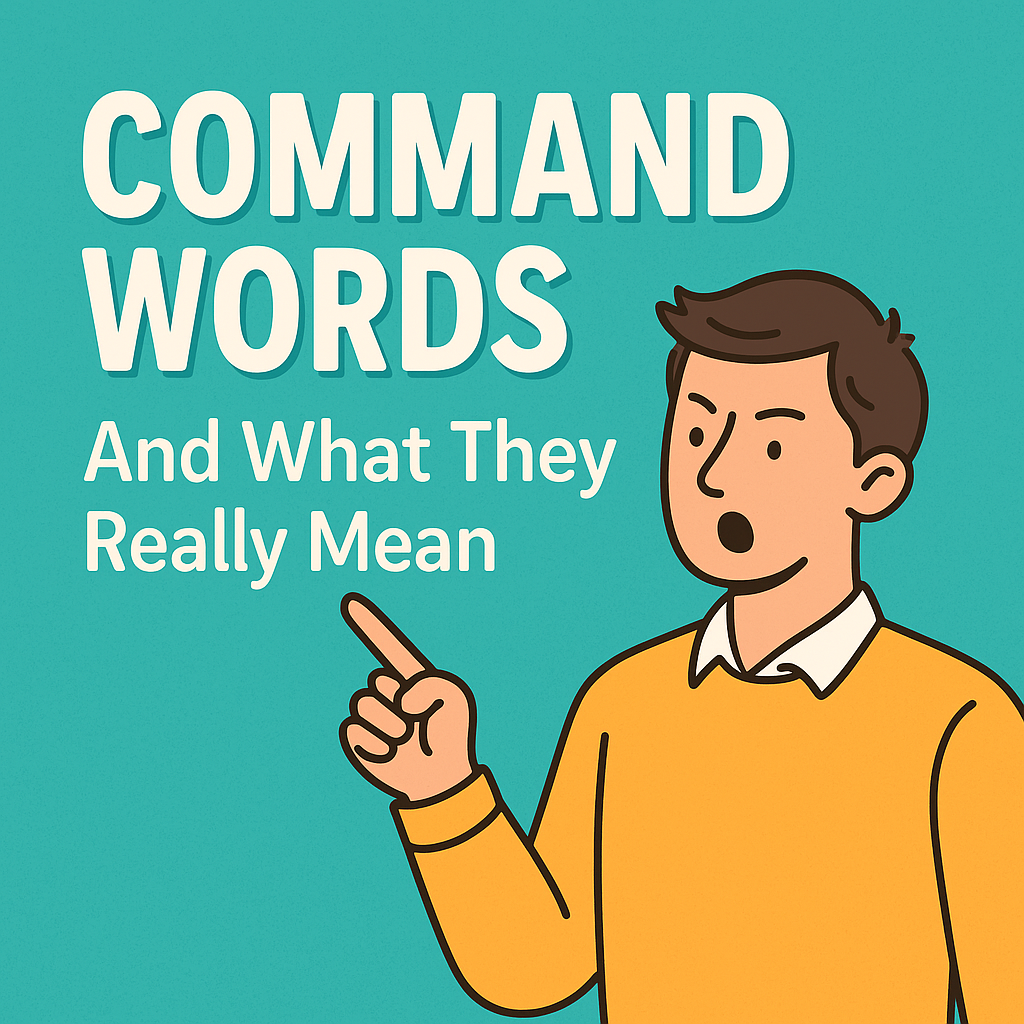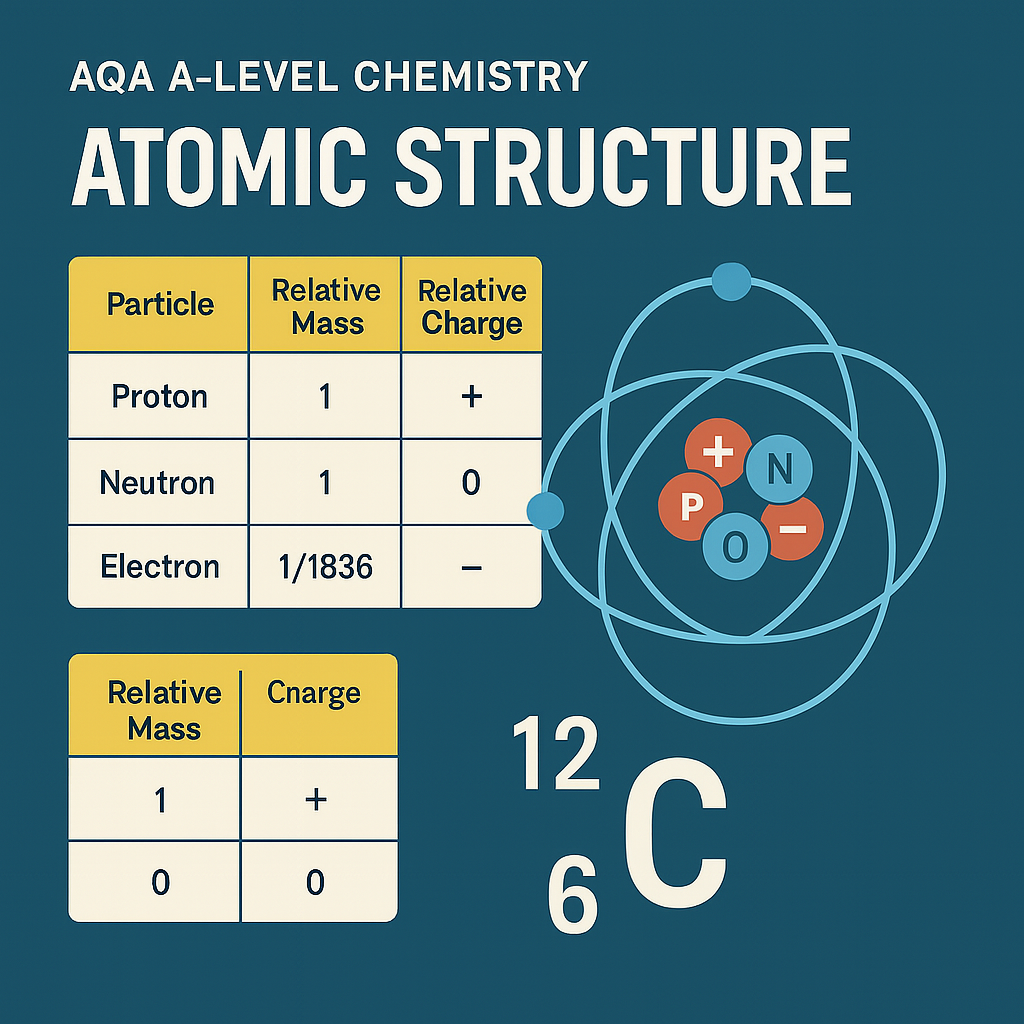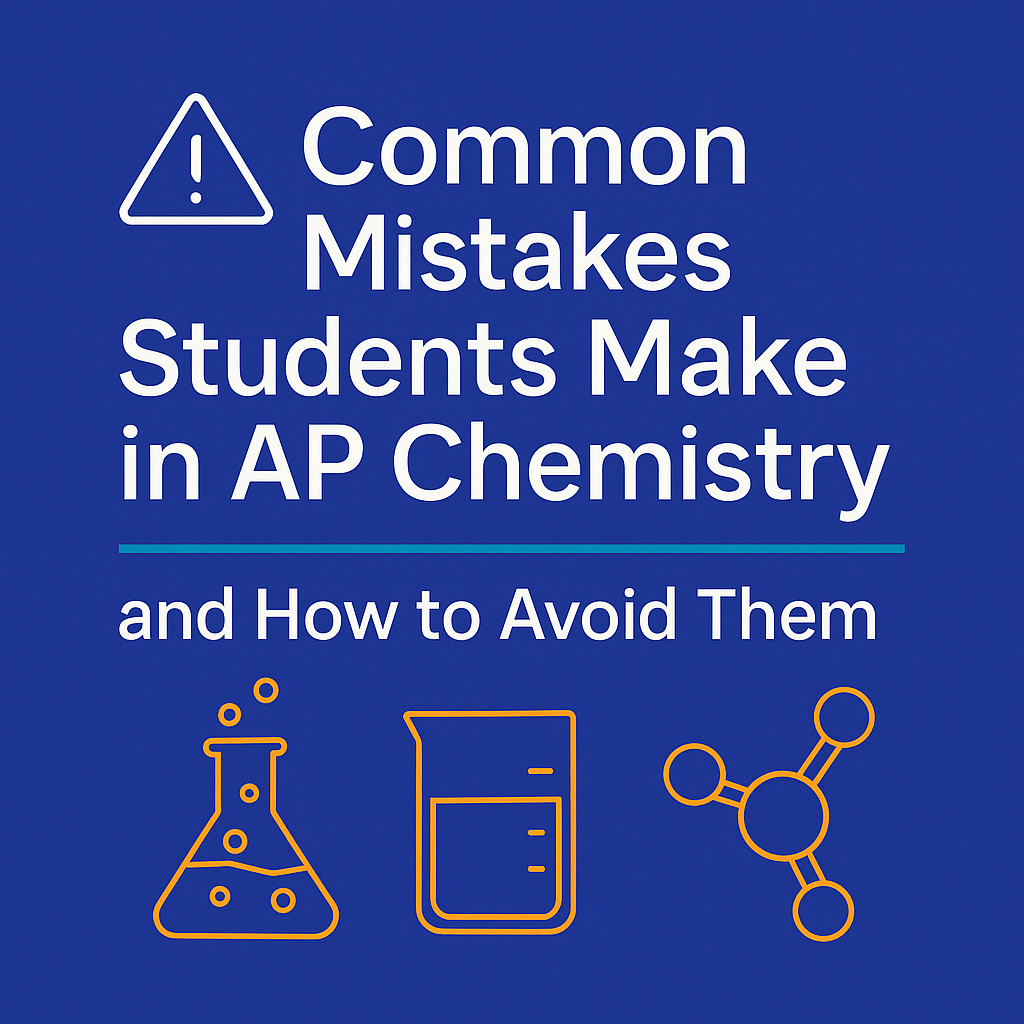IB Chemistry Exam Command Words: What They Really Mean
When you master the use of command words, you’re not just showing what you know—you’re showing that you understand what they’re asking.
One of the most overlooked secrets to scoring high in IB Chemistry is understanding command words. These are the words at the start of exam questions that tell you exactly what the examiner wants. Misunderstand one, and you might lose easy marks—not because you didn’t know the chemistry, but because you didn’t answer in the right way.
In the 2025 IB Chemistry exams, this is more important than ever. As IB students face increasingly application-based questions, interpreting the command word correctly is essential for success in Paper 1, Paper 2, Paper 3, and even the Internal Assessment.
This guide breaks down the most common IB Chemistry command words, explains what examiners are really asking, and shows you how to respond for maximum marks—with real examples and exam tips included.
Why Command Words Matter in IB Chemistry
Many students revise hard, know the syllabus content, and even practise exam questions—but still underperform. Why?
Because they write too much, too little, or go off-topic—simply because they didn’t understand the command word.
Command words are directly linked to the mark scheme. A “state” question might be worth 1 mark and expect a brief factual answer. A “compare” question might be worth 4 marks and demand a multi-part response with reasoning. Understanding the difference can be the difference between a 5 and a 7.
How IB Chemistry Uses Command Words
The IB provides a list of approved command terms that appear across all sciences. These are consistent across exams and must be interpreted the same way every time. They fall into three main categories:
Knowing and understanding
Applying and analysing
Evaluating and synthesising
Let’s break down each group in more detail.
Category 1: Knowing and Understanding
These command words test your basic knowledge and factual recall. You’ll see these often in Paper 1 and the short-answer sections of Paper 2.
State
“Give a specific name, value or other brief answer without explanation or calculation.”
Example:
State the Avogadro constant.
✅ 6.02 × 10²³ mol⁻¹
List
“Give a sequence of brief answers with no explanation.”
Example:
List two products of the complete combustion of butane.
✅ Carbon dioxide, water
Define
“Give the precise meaning of a word, phrase or physical quantity.”
Example:
Define electronegativity.
✅ The ability of an atom to attract a bonding pair of electrons.
Measure
“Find a value for a quantity.”
Used when reading data from a graph or image.
Example:
Measure the temperature at which the reaction reaches equilibrium.
✅ 53°C
Label
“Add labels to a diagram.”
Only label what the question asks for.
Example:
Label the cathode and anode on the diagram of an electrochemical cell.
Annotate
“Add brief notes to a diagram or graph.”
You are expected to explain or add context—not just name things.
Example:
Annotate the titration curve with the equivalence point.
Category 2: Applying and Analysing
These command words require you to use your knowledge in context. They appear frequently in Paper 2 and Paper 3.
Describe
“Give a detailed account or picture of a situation, event, pattern or process.”
Example:
Describe the trend in atomic radius across Period 3.
✅ It decreases due to increasing nuclear charge and the same number of electron shells.
Distinguish
“Make clear the differences between two or more concepts or items.”
Example:
Distinguish between ionic and covalent bonding.
✅ Ionic bonding involves electron transfer between metals and non-metals. Covalent bonding involves electron sharing between non-metals.
Compare
“Give an account of the similarities and differences between two items.”
Use tables or structured points.
Example:
Compare graphite and diamond.
PropertyGraphiteDiamondConductivityConducts (delocalised electrons)Does not conductHardnessSoft (layers slide)Hard (strong 3D structure)
Calculate
“Obtain a numerical answer showing the relevant stages of working.”
Example:
Calculate the number of moles in 12g of carbon.
✅
n = m/M
n = 12 ÷ 12
n = 1 mol
Determine
“Obtain the only possible answer using calculations or data.”
Example:
Determine the empirical formula of a compound with 40% C, 6.7% H, and 53.3% O.
✅ CH₂O (after full working)
Construct
“Present a graph, diagram, table or other structured format.”
Used for apparatus diagrams, titration curves, tables of data.
Draw
“Represent by means of a labelled, accurate diagram or graph.”
Example:
Draw the Lewis structure of ammonia.
Identify
“Provide an answer from a number of possibilities.”
This often appears in Paper 3 when analysing data.
Explain
“Give a detailed account including reasons or causes.”
One of the most important words. Always give reasoning.
Example:
Explain why water has a higher boiling point than hydrogen sulfide.
✅ Water molecules form hydrogen bonds, which require more energy to break than the dipole-dipole forces in H₂S.
Suggest
“Propose a solution, hypothesis or other possible answer.”
No single correct answer—just logical reasoning.
Example:
Suggest why a reaction may not go to completion.
✅ Because it is reversible and reaches equilibrium.
Category 3: Evaluating and Synthesising
These are higher-level command words used for complex questions—often in Paper 2 or Paper 3.
Evaluate
“Make an appraisal by weighing up the strengths and limitations.”
Example:
Evaluate the method used to determine enthalpy change.
✅ It is simple and quick, but heat loss and evaporation reduce accuracy.
Discuss
“Offer a considered and balanced review that includes a range of arguments or factors.”
Example:
Discuss the use of hydrogen fuel cells in vehicles.
✅ Includes environmental pros and cons, limitations, and feasibility.
Justify
“Give valid reasons or evidence to support an answer or conclusion.”
Example:
Justify the choice of indicator used in a strong acid–strong base titration.
✅ Phenolphthalein changes colour in the pH range of 8.3–10, which matches the sharp rise at the equivalence point.
Outline
“Give a brief account or summary.”
Used when only key steps are needed.
Example:
Outline the process of fractional distillation of crude oil.
✅ It is heated and separated into fractions based on boiling points.
Tips for Using Command Words Effectively
Underline or highlight the command word before you start answering
Count the marks and structure your answer accordingly
Match each part of your answer to the question (1 mark = 1 point)
Use keywords: “because,” “therefore,” “so that,” “as a result”
Review mark schemes to understand what each command word expects
Avoid writing too much for low-mark questions—it wastes time and may lose focus
Command Word Cheat Sheet
Here’s a handy revision table to summarise what to do for each command word:
| Command Word | What It Means | What You Should Do |
|---|---|---|
| State | Give a fact | One-word or number answer |
| Define | Exact meaning | Use syllabus or glossary definitions |
| Describe | What is happening | Tell the story, step-by-step |
| Explain | Why it happens | Give cause and effect |
| Compare | Similarities and differences | Use a table or side-by-side format |
| Distinguish | Focus on differences | Highlight contrasting features |
| Calculate | Do the maths | Show formula, steps, answer + units |
| Evaluate | Weigh pros and cons | Give judgment, use logic |
| Justify | Defend a choice | Give a reason based on theory or data |
| Suggest | Use logical reasoning | Provide a plausible idea with explanation |
Final Thoughts: Think Like an Examiner
Command words are like instructions on a recipe. If you ignore or misread them, even the best ingredients (your knowledge) won’t turn into a great result. When you master these terms, you’re not just showing what you know—you’re showing that you understand what they’re asking.
Spend some time practising each command word with past paper questions. It could be the single best revision strategy you adopt this year.
Need help improving your exam technique?
Book a 15 mins consultation with Dr Marguerite Quinn, expert IB Chemistry tutor. Get personalised help with exam questions, command word strategies, and achieving the score you deserve.





Understand AQA A-Level Chemistry Section 3.1.1.2 on mass number and isotopes. Learn key definitions, isotope notation, calculations, and how this topic builds your scientific and exam skills.